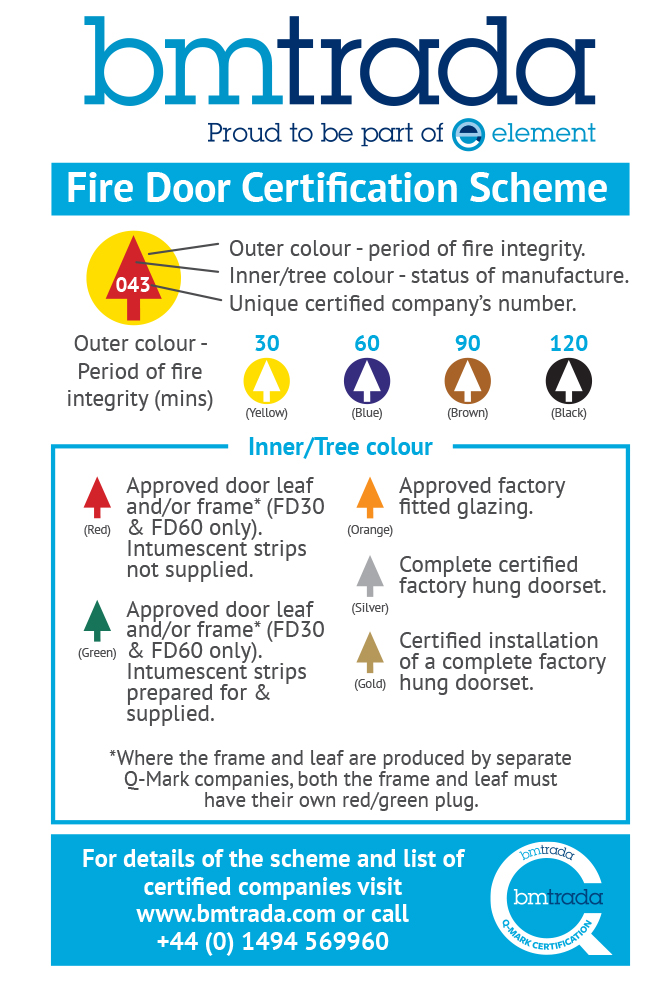
What is a Fire Door Plug
Looking For More Information?
Contact Our Team
What is a Fire Door Plug
Manufacturers of fire doors have a legal requirement to demonstrate the ability of their doors to resist the passage and spread of fire. In this blog, we will look at the legislation which encompasses fire door compliance, the role of third party certification and how you can identify and compliant product.
Fire safety legislation
Under legislation, when a manufacturer is looking to place a fire door on the market, it must have evidence of performance to resist the passage and spread of fire. If you are procuring fire doors, you should ask the manufacturer, supplier or installer to provide such evidence.
Building Regulations Approved Document B
Part B of the building regulations gives the functional requirements for fire safety within buildings and Approved Document B provides guidance on how to meet those functional requirements (England and Wales – there is other guidance in Scotland, Northern Ireland). ADB contains an appendix specific to fire resisting doors and gives detail on the performance requirements for fire resisting doors with reference to British and European standards as well as the required levels of fire resistance (and smoke control) which is linked to the location of the doors within the building.
The Regulatory Reform (Fire safety) Order 2005 applies to existing buildings in England and Wales (similar legislation exists in Northern Ireland and Scotland) and it is a legal requirement to comply with the requirements of the legislation. The Regulatory Reform (Fire Safety) Order 2005 applies to all properties except inside people's private homes. It covers public buildings, places of employment, entertainment and leisure as well as the common areas of buildings that contain separate flats. This includes each individual flat entrance door from the common areas. Article 17 of the Order places an obligation on the "Responsible Person" to ensure fire doors are "subject to a suitable system of maintenance and are maintained in an efficient state, in efficient working order and in good repair". Given that the employer, building operator, building owner or possibly his agent has a legal duty to maintain fire doors in efficient working order, periodic inspection is necessary, and this includes identifying the suitability of any doors that are required to provide fire resistance as part of the overall fire safety strategy for the building
Why manufacturers opt for third party certification schemes
Third party certification is a process of testing and verifying a fire door’s design, performance, manufacturing process and quality assurance of procedures and supporting documentation. A manufacturer which opts for third party certification is independently audited to ensure that the management and manufacturing processes, and supporting systems, are in place to ensure consistency with the fire door / fire doorset which was initially tested. The product is also subjected to periodic audit testing, to ensure the manufacture is producing product that is capable of providing the same level of fire resistance that was establish in the initial type testing
The Q-Mark fire door scheme
This blog looks at fire doors which are certified under the BM TRADA Q-Mark scheme. BM TRADA is a certification body assessed by United Kingdom Accreditation Services (UKAS). The BM TRADA Q-Mark fire door manufacturer scheme can provide additional reassurance beyond the legal requirements, that your products are fit for purpose through on-going compliance to the original product specification. The scheme has four main objectives:
- Raise the on-going standard of fire door manufacture
- Ensure on-going compliance with the original product specification
- Maximize the product's service life
- Provides peace of mind that the you are producing a quality product with independent verification by a third-party certification body. BM TRADA also provide a Q-Mark scheme for fire door installation and fire door maintenance
How to identify a fire door Fire door manufacturers vary in the way they mark their products. A fire door manufacturer which is certified under this scheme will mark their doors with a label usually found on the door top edge or with plastic plugs on the hanging edge. By locating the label or plug it is possible to identify the door's fire rating and manufacturer's details.
Fire door labels
The label or plug indicates that the door is a third party certificated fire door and provided that it has been installed and maintained in accordance with the manufacturer's instructions it should provide the fire protection level indicated. Timber doors that have achieved third party certification from BM TRADA feature colour coded fire door plugs, giving specifiers and building owners a way of establishing that the door is certified. The colouring of the plugs also indicate the status of the certification however not all plugs are equal. A plug indicates certification but depending on the colour it could be certified up to the point where it requires intumescent or needs to be paired with a certified frame etc.
Q-Mark Fire door identification plugs
A fire door can carry other labels or marks (for example the name of the manufacturer or product reference) found on a fire door but these may not refer to a third party certification scheme, in which case you should contact the manufacturer for evidence of performance.
By implementing third party certification it provides added reassurance and helps generate new business by enabling you to tender for the increasing number of projects that specify third party certification of fire doors.
To contact an expert to discuss the Q-Mark scheme please get in touch.
Find related Resources



